 |
 |
 |
| |
More Drug Resistance Observed on NNRTIs than Boosted PI Regimens in Swiss HIV Cohort Study, Study Reports
|
| |
| |
Reported by Jules Levin
XV Intl HIV Drug Resistance Workshop
June 13-17, 2006
Sitges, Spain
"Virological failure and emergence of treatment-specific HIV-1 drug resistance patterns on firstline HAART in previously untreated patients from the Swiss HIV Cohort Study (SHCS)"
H Gunthard1, V von Wyl1, S Yerly 2, J Boni 3, J Schupbach3, P Burgisser 4, T Klimkait 5, M Battegay5, H Furrer 6, A Telenti 4, B Hirschel 7, P Vernazza8, E Bernasconi9, M Rickenbach10, L Perrin2, B Ledergerber1 and the SHCS
1Zurich University Hospital
2Laboratory of Virology, Geneva University Hospital
3Swiss National Center for Retroviruses, University of Zurich;
4University Hospital Lausanne
5Basel University Hospital
6University Hospital Berne
7University Hospital Geneva
8Kantonsspital St. Gallen
9Ospedale Civico Lugano
10Swiss HIV Cohort Study Data Center, Lausanne, Switzerland
Huldrych Gunthard reported these results in an oral presentation at the 2006 Resistance Workshop. The objective of this study was to assess virological failure and development of HIV-1 drug resistance for different first-line HAART regimens containing either nonnucleoside reverse transcriptase inhibitors (NNRTI), unboosted protease inhibitors (PI), or boosted protease inhibitors (PI/r).
AUTHOR SUMMARY
-- Failure on 1st line HAART was significantly lower for regimens containing NNRTIs & boosted PIs when compared to PIs alone.
-- No difference in adherence between treatment groups.
-- Patients treated with boosted PIs had significantly higher pre-treatment HIV-RNA levels and lower CD4-counts than the other two groups.
-- Boosted-PI containing regimens induced resistance affecting fewer drug classes when compared to NNRT-based regimens.
-- Cumulatively, the least number of resistance mutations was found in patients treated with boosted-PIs, followed by NNRTIs and PIs alone.
Authors concluded: PI-r boosted regimens seem to result in less drug resistance (affecting less drug classes and less absolute numbers of mutations) when compared to NNRTI or even more pronounced to PI-alone containg regimens.
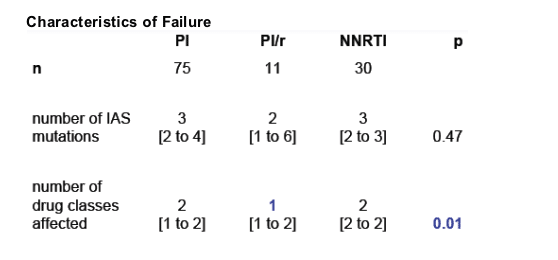
Study Methods
Patients were eligible for this study if they enrolled in the Swiss HIV Cohort Study initiating HAART between 1999 & 2005 with 2 or more HIV-RNA measurements after 180 days of treatment. HAART was defined as 2 or more NRTIs and 1 PI, 2 or more NRTIS and 1 PI/boosted, and 2 or more NRTIs and 1 NNRTI. Viral failure was defined as 2 HIV viral loads of >500 copies/ml after 180 days of treatment after having achieved undetectable HIV RNA, HIV RNA >500 after 180 days of treatment with subsequent change of ART, or HIV RNA HIV RNA >500 after 180 days of treatment and having never achieved undetectable RNA levels.
Resistance testing was performed by the 4 accredited resistance labs in Switzerland. All anonymized data was entered in the SHCS resistance database, which uses the web-based SMARTGENE/IDNS technology. All labs are regularly participating in the ANTS quality circle using 'predefined' mixtures harboring specific mutations associated with drug resistance. ABI HIV-Truegene kit, "in-house" RT-PCR, Virco system. Resistance tests were linked to clinical data of the SHCS. Only sequences having passed a "standardized" quality check were entered into the database.
Data analysis & statistics: Kaplan-Meier analysis, log-rank test, Chi-square test, Kruskall-Wallis test, Statistical analysis was performed using Stata, version 9.2. Muations associated with drug resistance were determined using the IAS USA resistance mutation group (version Fall 2005). For PI mutations only major mutations were considered.
RESULTS
- 1662 patients fulfilled the selection criteria.
- 151 patients showed a virologic failure.
- 116 patients failing HAART also had a resistance test.
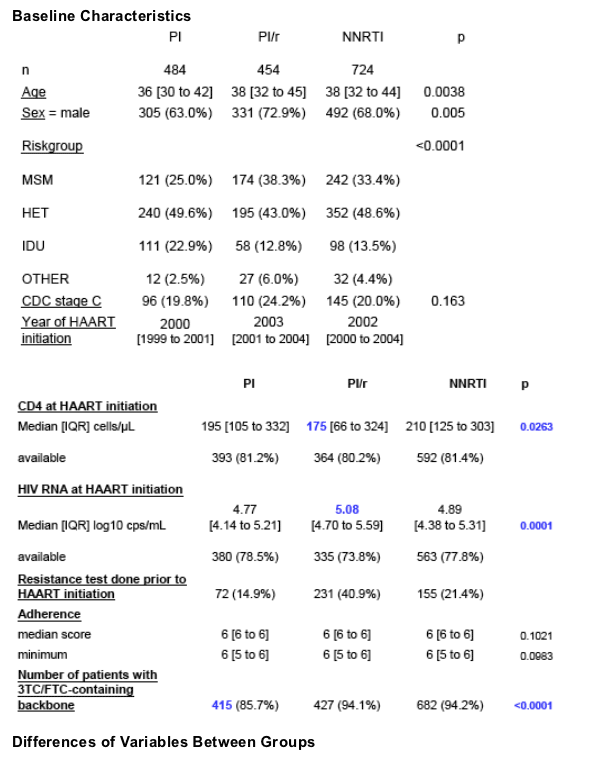
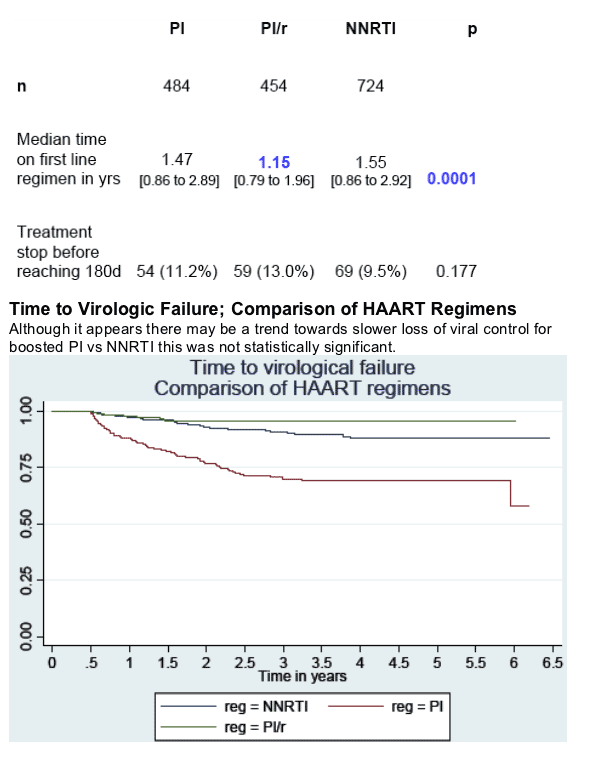
Resistance to Drug Classes
Study reports resistance to 3TC/FTC was occurred most often on a PI regimen, second more often on a NNRTI regimen, and least often on a boosted PI. Of interest PI resistance was found in about 18% of patients on a boosted PI & NNRTI resistance occurred in about 47% of patients on a NNRTI. Resistance to NRTIs was reported for about 28% on boosted PI regimen & about 18% for patients on NNRTI regimen, and for about 20% on a PI regimen. No resistance was reported for about 37% on boosted PI, about 37% on NNRTI, and about 20% on PI. PI resistance was reported for about 51% on PI vs about 18% on boosted PI, and about 2% on NNRTI. (percentages are estimates based on visual observation of graphs)
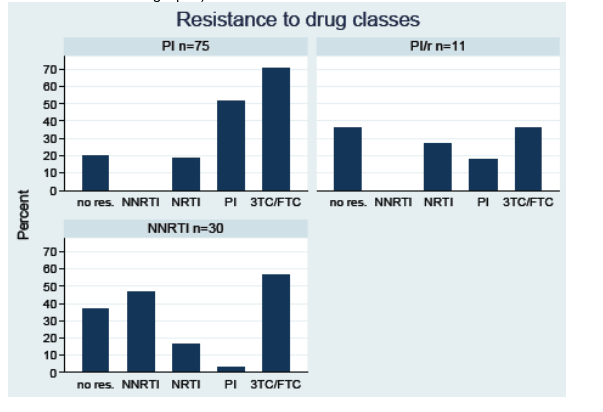
Resistance: Number of Classes Affected
Investigators report that taking a boosted PI regimen (18%) resulted less often in resistance to 2 drug classes compared to NNRTI regimens (52%), and taking a PI regimen resulted more often in resistance to 2 drug classes compared to taking a boosted PI but this occurred less often in patients taking a PI regimen compared to taking an NNRTIS regimen (40% vs 52%). Resistance to 3 classes was reported for about 10% on PI regimen, 0 on boosted PI, and about 2% on NNRTI.
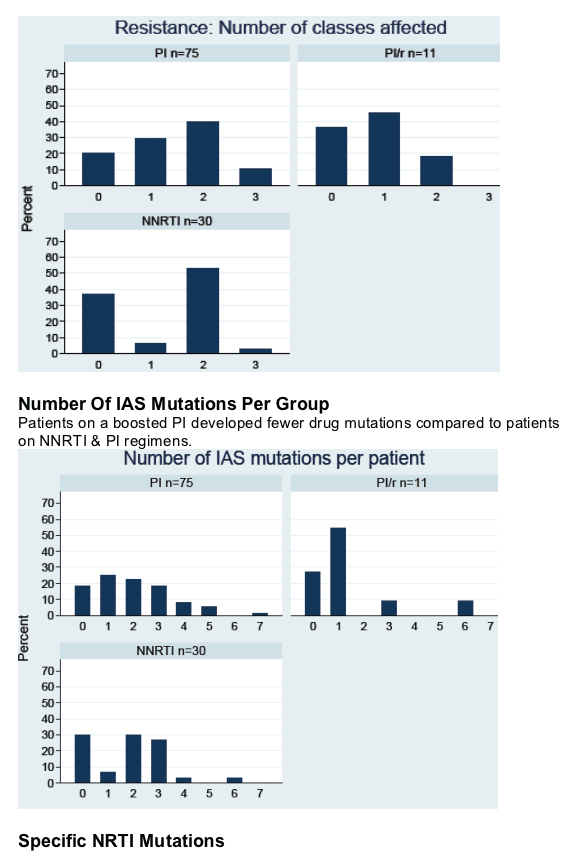
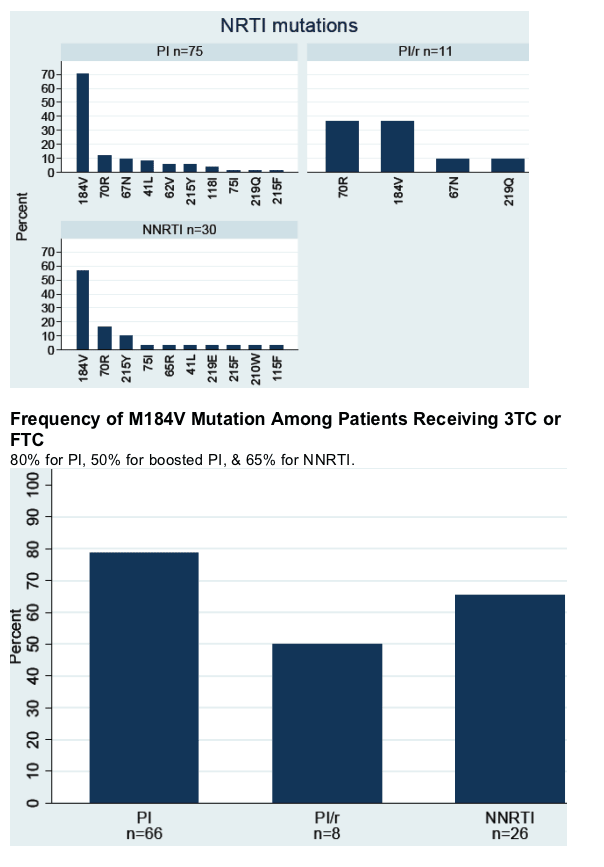
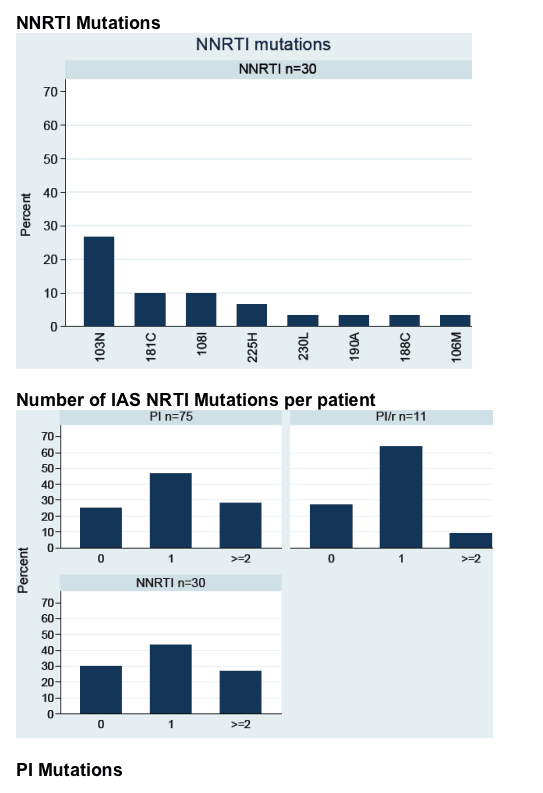
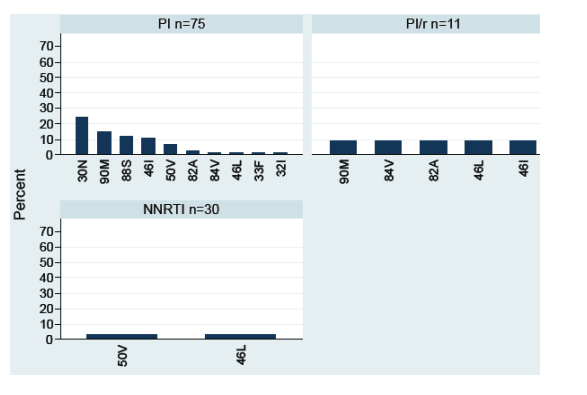
|
| |
|
 |
 |
|
|